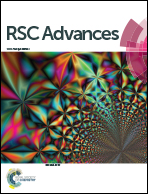Parameters affecting carbon nanofiber electrodes for measurement of cathodic current in electrochemical sensors: an investigation using artificial neural network
Abstract
The aim of this work was to investigate the effective parameters for predicting the cathodic current in a polyacrylonitrile-based carbon nanofiber (CNF) electrode using an artificial neural network (ANN) method. The various factors including CNF diameter, CNF layer thickness, electrodeposition time of Pt on the CNF electrode, and pH of a phosphate buffer solution (PBS) containing K3Fe (CN)6 were designed to investigate the cathodic current of the CNF electrode. The different samples of the electrodes were fabricated as training and testing data-sets for ANN modeling. The best network had one hidden layer with 10 nodes in the layer. The mean squared error (MSE) and linear regression (R) between the observed and predicted cathodic current were 0.0763 and 0.9563, respectively, confirming the performance of the ANN. The obtained results using cyclic voltammetry (CV) exhibited that the cathodic current improves with decreasing CNF diameter, CNF layer thickness, electrodeposition time of Pt on the CNF electrode and solution pH.


 Please wait while we load your content...
Please wait while we load your content...